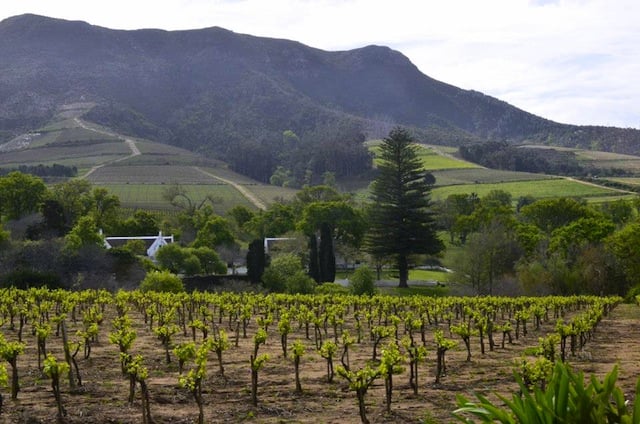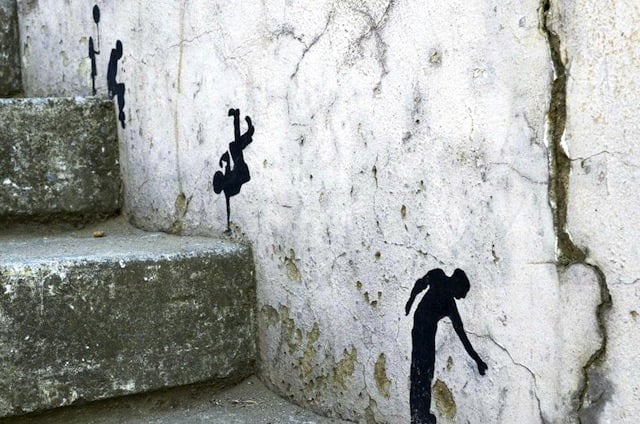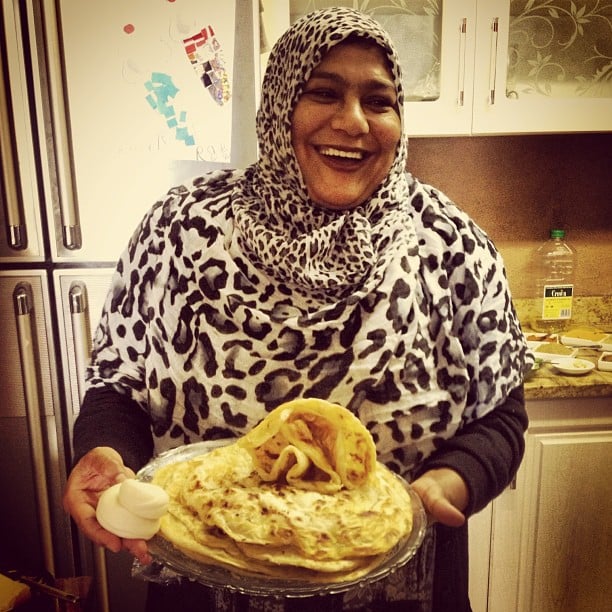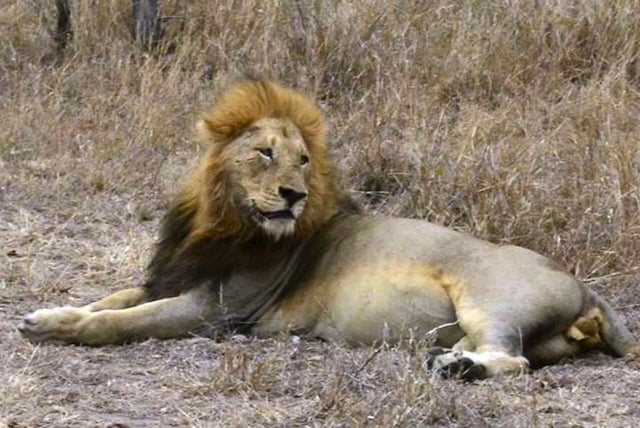
Note: This article is based on my experience traveling through Johannesberg, Cape Town, Constantia Winelands and the Manyeleti Reserve (outside of Kruger National Park).
Wine
The wine is so good here but you’d pay about $5 for the same quality wine that you would spend $50 back in the states. During my time in South Africa I had the pleasure of staying at the Steenberg Hotel, a 5-star historic farm hotel that is the epitome of rustic luxury. At their onsite winery I expected to pay at least $20 USD for a bottle of wine; however, I was able to purchase a delicious Cabernet Sauvignon for only $4 USD. At the nearby Klein Constantia winery I found a similar pattern, with their most expensive wine being about $50 and their most inexpensive — but still high-quality — wine being around $10.
English With Culture
When I travel I love going to places where they don’t speak English, as these are the destinations where the culture is typically very different from my own; however, in South Africa you’ll be able to immerse yourself in a colorful culture where they also speak English. While the country is very modernized, you’ll also be able to have traditional experiences like cooking a Malay meal in a local Bo-Kaap home, visiting a sangoma for a healing ritual, hearing locals speak local dialects (like Cosa, where they make a melodic click noise), learn the local South African handshake, explore township markets, learn about shack culture and educate yourself on the country’s Apartheid history and how they’ve made many positive changes since this time.

Street art in Joburg’s eclectic Newtown neighborhood
A Vibrant Arts Culture
While I found all the places I visited to be very focused on the arts, Johannesburg was where this cultural facet really came to life for me. While the Victory Theatre puts on a show called “Umoja” (meaning “the spirit of togetherness”) that tells the story of South Africa through ancient and modern music and dance, Joburg Theatre features one of only two ballet companies in South Africa. There’s also the hipster hood of Maboneng, littered with arts accommodations, galleries, Africa’s first design museum (Museum of African Design), Arts on Main, the Pop Art Theatre and vibrant street art. It’s worth noting Joburg aims to be the street art capital of the world by 2040, with the suburb of Newtown being the city’s open air art hub. Here you’ll find projects like the “Newtown Heads,” featuring about 560 unique busks crafted from recycled sleeper trains, and Johannesburg’s unofficial graffiti gallery located under the M1 Highway on Henry Nxumalo Street.
Adventure At Every Turn
No matter where go in South Africa you’ll find adrenaline-pumping adventures: Diving with Great White Sharks near Cape Town, horseback riding in the iSimangaliso Wetlands, exploring the Cango Caves, bungee jumping in Tsitsikamma, experiencing the world’s highest cable gorge swing at Graskop, trekking the North Drakensberg Traverse, paragliding off Table Mountain in Cape Town and much more. Essentially those looking to get their heart rate up and their palms sweaty will never be without options.

Fresh made rotis on a Cape Malay Cooking Safari
Delicious Malay Cooking
Cape Town is known for its Malay community, which is best explored in the Bo-Kaap. Here you’ll find one of the world’s most colorful streets, with homes painted in yellows, purples, blues, greens, oranges and reds. During my stay in Cape Town I was able to experience a Cape Malay Cooking Safari with Andulela Tours that allowed me to visit the home of a local and learn to cook Malay dishes in her kitchen. After a welcome drink of falloda — made with rose, syrup and tapioca seeds — and an appetizer of chili bites, Anima (a local Malay woman in Cape Town’s Bo-Kaap) taught me to cook chicken curry, samoosas, roti and sambal, which we then ate together at her dining room table. A sweet and traditional dessert of koeksisters was also part of the experience. Of all the things I did during my two week trip to South Africa, this was one of the top for being the most memorable.
The Birthplace of Humanity
Before visiting South Africa, I was unaware the country — and the continent of Africa as a whole — had such a rich history. In fact, it’s believed by many to be the birthplace of humanity. Johannesburg is a great place to explore this idea, as you can head to the Origins Centre to learn background information through interactive exhibits before driving less than an hour outside the city to the Cradle of Humankind. This is the place where pre-humans are said to have lived millions of years ago, and many important fossils proving this have been found within their 13 paleontological excavation sites. After perusing the interactive exhibits in the visitor centre, trek down into the Sterkfontein Caves to see where Mrs. Ples — a 2.3-million-year-old Australopithecus Africanus (believed to be the common ancestor between humans and chimps and gorillas) skull was discovered. This is also where Little Foot was found, a 3..3-million-year- old almost complete skeleton of an Australopithecus.

Lazy lion on safari outside of Kruger National Park
Safari Experience
No trip to South Africa would be complete without seeing the myriad exotic animals that exist there. The best destination within the country to experience this is Kruger National Park and/or the many nature reserves that surround it. During my time in South Africa I explored the Manyeleti Reserve through Honeyguide Tented Safari Camps via their Mantobeni Camp. The experience was more than just viewing animals from a distance, however, but also about seeing how they behave and interact in their everyday life in the wild. The safari experience was enhanced with guided bush walks, tents with comfortable beds, delicious multi-course meals, and wine and drinks with new friends.
Even if you don’t have time to visit Kruger you can still see exotic animals. When I was in Johannesburg I visited the Rhino & Lion Nature Reserve, located less than an hour outside the city. Within its 3,000 acres (1,200 hectares) I was able to see giraffe, pygmy hippos, zebra, white and brown lions, rhinos, wild dogs, ostrich, springbok, blesbok, elands, sables, gnu, wildebeest, antelope and a large array of bird species from the comfort (and safety!) of a safari jeep.
Craft Beer
While South African wine is world renowned, their craft beer is a bit of a secret. That being said, it’s a facet of the country definitely worth exploring. South Africa has always had a rich beer culture, but until recently locals relied on mass-produced labels; however, as more and more independent brewers open up shop the demand is increasing for high-quality artisanal brews. At Cape Town’s waterfront you can visit Mitchell’s Scottish Ale House, home to South Africa’s oldest craft brewery, started in 1983 by Lex Mitchell in Knysna. The brewery focuses on using only the highest quality barley, yeast, hops and pure water in carefully controlled batches to make lagers, stouts, ciders and more. In Johannesburg, make sure to visit The Griffin Craft Beer Gastropub for craft beers and local wines that your server can help you perfectly pair with seasonal, sustainable meals.

African Viagra
Traditional Healing
For those interested in holistic medicine, visiting South Africa allows you to visit a sangoma (Note: having a local guide who can translate is recommended. I used Cindy from Kgokare Tours). These people use bones and shells to give you a reading, and then can prescribe you natural remedies on how to cure illnesses, keep away bad spirits and enhance your life in general. After visiting Kwa-Gumede (phone: 724 54 2355) in Para Market in Johannesburg’s Soweto Township, I learned a lot of interesting information. For example, stabbing someone with porcupine quills can flush illness and evil spirits from their body, planting aloe vera in your yard can keep away mean ghosts, and Umvusa Nkunzi — a vegetable that looks like a cross between a potato and an onion — is used as African Viagra.
Beautiful Scenery
One of the things that surprised me most about South Africa was the many different landscapes and settings. While I expected the animal-filled grasslands and dense woodland, I also encountered a number of other beautiful landscapes and settings: Cape Town’s waterfront and soft sand beaches; the aerial bay, mountain and city views from atop Table Mountain; Maboneng’s colorful hipster hood; the street art-filled Newtown; the rows upon rows of Sauvignon Blanc and Chardonnay in the Constantia Winelands; the woodland savannah of Manyeleti Reserve near Kruger; the cavernous and grassy Cradle of Humankind outside of Johannesburg; the farm and river land of Magalies; and much more.
*Featured image courtesy of Matt McGillivray

Jessica Festa is the editor of the travel sites Jessie on a Journey (http://jessieonajourney.com) and Epicure & Culture (http://epicureandculture.com). Along with blogging at We Blog The World, her byline has appeared in publications like Huffington Post, Gadling, Fodor’s, Travel + Escape, Matador, Viator, The Culture-Ist and many others. After getting her BA/MA in Communication from the State University of New York at Albany, she realized she wasn’t really to stop backpacking and made travel her full time job. Some of her most memorable experiences include studying abroad in Sydney, teaching English in Thailand, doing orphanage work in Ghana, hiking her way through South America and traveling solo through Europe. She has a passion for backpacking, adventure, hiking, wine and getting off the beaten path.








